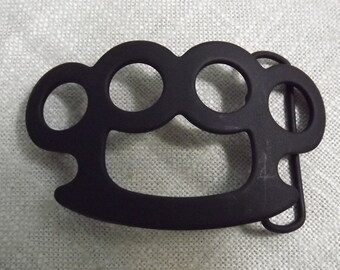

But they actually don’t weigh as much as expected as they are more solid than they are heavier. When it comes to handheld weapons like brass knuckles, people often wonder if it’s hard to handle them.

You can always train yourself to get used to using them without too much trouble.


This form was known as a bichuwa bagh nakh because the blade was based on that of the bichuwa (scorpion knife).There are some weapons that are functional despite their design and structure. Many bagh naka also incorporated a spike or blade on one end of the crossbar. Earliest bagh nakh did not utilize loops for the fingers, rather round holes were punched through the central plate. Several variations of bagh nakh exist, including one in which the single crossbar is replaced by two plates hinged together with an additional loop and claw for the thumb. The ruler's excitement on these occasions often grew to such a pitch that he could scarcely restrain himself from imitating the movements of the duellists.Īfter the Direct Action Day riots, the Bengali Hindu girls, in order to defend themselves, began to wear a kind of sharp weapon resembling bagh nakh while going to school. The men, drunk with bhang or Indian hemp, rushed upon each other and tore like tigers at face and body forehead-skins would hang like shreds necks and ribs were laid open, and not infrequently one or both would bleed to death. The weapons, fitted into a kind of handle, were fastened by thongs to the closed right hand. Rousselete, who visited Baroda in 1864, described "naki-ka-kausti" as one of the raja's favourite forms of entertainment. While often associated with thieves and assassins, the bagh nakh was also used by wrestlers in a form of fighting called naki ka kusti or "claw wrestling" which persisted even under British colonial rule. Instead of going in between the gaps in the fingers the Sher panja goes over the wrist and fingers and has claws coming out. The Nihangs also have a number of traditional weapons one of them being the Sher-Panja which is inspired by the bagh nakha. It is recommended that Nihang women carry a bagh nakh when going alone to dangerous areas. It is a popular weapon among the Nihang Sikhs who wear it in their turbans and often hold one in their left hand while wielding a larger weapon such as a sword in the right hand. The most well-known usage of the weapon was by the first Maratha leader Shivaji who used a bichuwa and bagh nakh to kill the Bijapur general Afzal Khan. Poisoned bagh nakh had been used by the Rajput clans for assassinations. There are conflicting reports of the time period in which the bagh nakh first appeared.


 0 kommentar(er)
0 kommentar(er)
